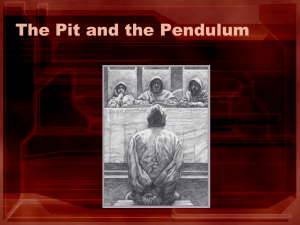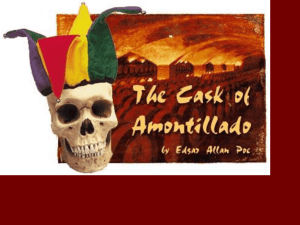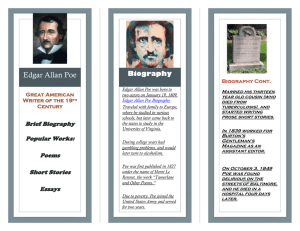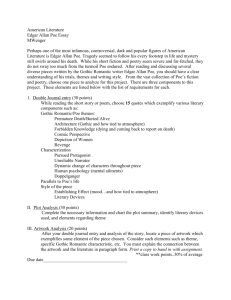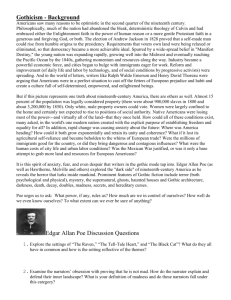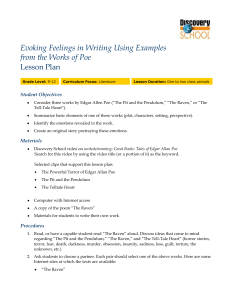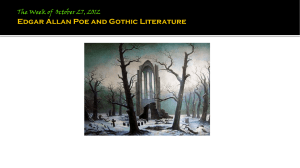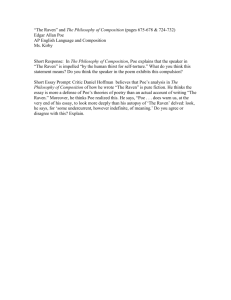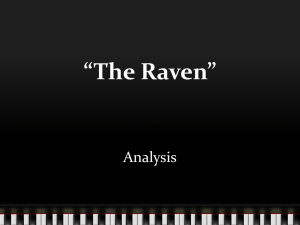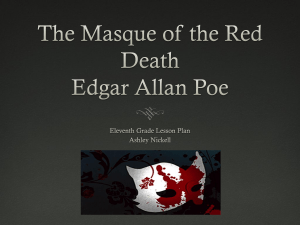Share This Page: Tales Of Edgar Allan PoeTales-Of-Edgar
advertisement
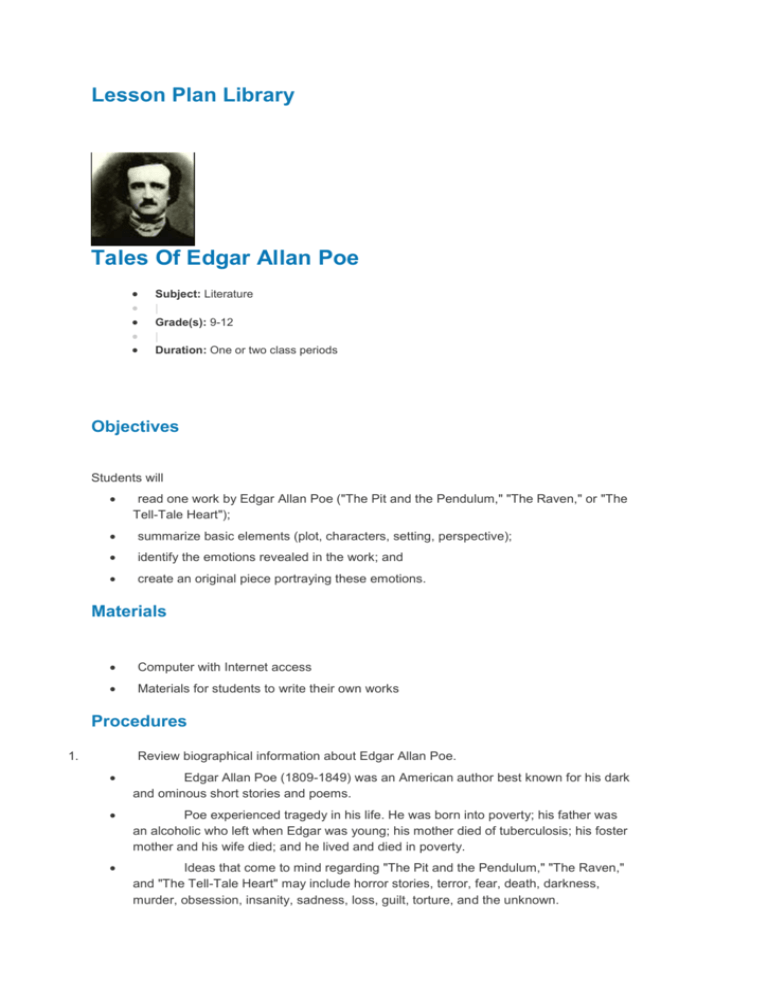
Lesson Plan Library Share This Page: Tales Of Edgar Allan Poe Subject: Literature | Grade(s): 9-12 | Duration: One or two class periods Lesson Plan Sections Objectives Students will read one work by Edgar Allan Poe ("The Pit and the Pendulum," "The Raven," or "The Tell-Tale Heart"); summarize basic elements (plot, characters, setting, perspective); identify the emotions revealed in the work; and create an original piece portraying these emotions. Materials Computer with Internet access Materials for students to write their own works Procedures 1. Review biographical information about Edgar Allan Poe. Edgar Allan Poe (1809-1849) was an American author best known for his dark and ominous short stories and poems. Poe experienced tragedy in his life. He was born into poverty; his father was an alcoholic who left when Edgar was young; his mother died of tuberculosis; his foster mother and his wife died; and he lived and died in poverty. Ideas that come to mind regarding "The Pit and the Pendulum," "The Raven," and "The Tell-Tale Heart" may include horror stories, terror, fear, death, darkness, murder, obsession, insanity, sadness, loss, guilt, torture, and the unknown. 2. Ask students to choose a partner. Each pair should select one of the works listed above. The works are available on the Internet at the following sites: The Raven http://www.poemuseum.org/selected_works/the_raven.html The Tell-Tale Heart http://www.poemuseum.org/selected_works/tell_tale_heart.html The Pit and the Pendulum http://www.eapoe.org/works/tales/pitpdmc.htm 3. With their partners, students should read the work and briefly summarize the following elements: Plot: Give a brief summary of the piece. Setting: Describe the setting. What words or phrases help paint the picture? Characters: How does Poe portray the characters? Perspective: Who is the narrator? Describe this person's feelings. Is it written in third or first person? How does this affect the piece? 4. Have the pairs explore the work as a psychological thriller. What human emotions are revealed? (Examples may include fear, sadness, regret, loneliness, obsession, anticipation, and helplessness.) Have students identify and write words and phrases that portray these emotions. 5. Ask each pair to think about events or images from their experiences that conjure up the same emotions. For example, what have they experienced that may have sparked deep fear or loneliness? 6. Finally, have students work individually to create an original piece that portrays these emotions. They may make posters, write poems or short stories, or record songs. Encourage them to use some of Poe's words and phrases. Back to Top Evaluation Use the following three-point rubric to evaluate students' work during this lesson. Three points: Students were highly engaged in class discussions; created clear and detailed summaries that included plot, setting, characters, and perspective; developed creative, thoughtful personal works reflecting emotions from Poe's writing. Two points: Students participated in class discussions; created adequate summaries that included some of the following elements: plot, setting, characters, and perspective; developed personal works reflecting emotions from Poe's writing. One point: Students participated minimally in class discussions; wrote incomplete summaries that included few or none of the following elements: plot, setting, characters, and perspective; personal works were unclear or did not reflect emotions from Poe's writing. Back to Top Vocabulary narrator Definition: A person telling a story Context: The voice of the narrator can determine how a reader interprets a story. first-person narrative Definition: A form of writing in which the story is told from the perspective of a character in the storyContext: In a first-person narrative, a story's character refers to himself or herself as "I." third-person narrative Definition: A form of writing in which the story is told from an omniscient point of view; all characters are referred to as "he" or "she." Context: In a story written in the third-person narrative, a reader may see into the thoughts of different characters. plot Definition: The sequence of events that make up a literary work; the structure of the story Context: The plot of "The Tell-Tale Heart" ends with the narrator confessing his crime. setting Definition: The background (as time and place) of the action of a story or play Context: Many of Poe's short stories and poems have a dark and foreboding setting. Gothic Definition: A style of literature style emphasizing the grotesque, mysterious, and desolate. Context: Edgar Allan Poe is considered an author of Gothic literature. Back to Top Standards This lesson plan addresses the following standards from the National Council of Teachers of English: Students read a wide range of literature from many periods in many genres to build an understanding of the many dimensions (e.g., philosophical, ethical, aesthetic) of human experience. Students apply a wide range of strategies to comprehend, interpret, evaluate, and appreciate texts. They draw on their prior experience, their interactions with other readers and writers, their knowledge of word meaning and of other texts, their identification strategies, and their understanding of textual features. Back to Top Credits Joy Brewster, curriculum writer, editor, and consultant
